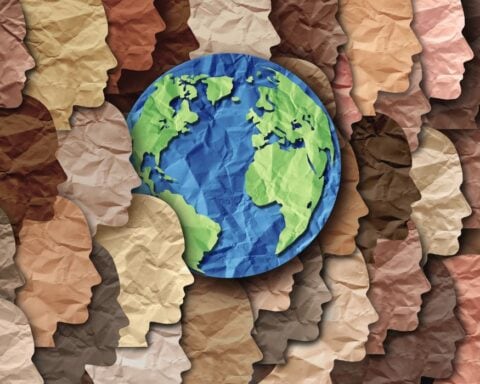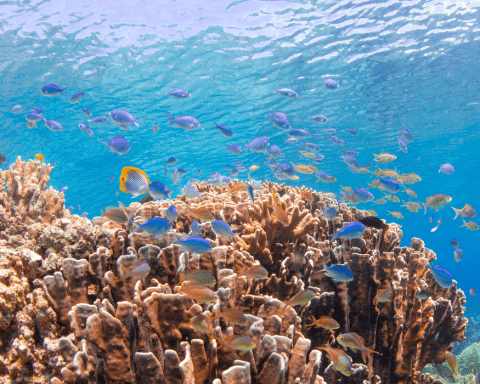On every corner of the planet, the water emergency is in plain sight.
In Madagascar, where children are skipping school to dig into bone-dry river beds, and Argentina, where corn husks come up hollow. Across the parched Mediterranean, subject to another blistering heat wave in April, and in massive reservoirs in the United States, where dangerously low water levels threaten power generation. Canada is already staring down what officials say is one of the worst wildfire seasons on record because of drought and high temperatures.
Hundreds of blazes are active from B.C. to Nova Scotia, and hazy plumes of ochre smoke stretching into the United States have triggered dozens of air quality warnings. "We must prepare for a long summer," said Steven Guilbeault, Canada's minister of environment and climate change, this week.
These conditions underscore the urgency behind the UN's first water conference in 46 years, held in New York in March.
“Water is a human right,” said United Nations Secretary-General António Guterres. “But water is in deep trouble. We are draining humanity’s lifeblood through vampiric overconsumption and unsustainable use, and evaporating it through global heating.”
Nearly three out of every four natural disasters on this planet are linked to water, and one in four of us live without safely managed water services or clean drinking water, the UN says. Water usage has been increasing by roughly 1% every year for the last 40 years, according to a new UN report released for the conference – World Water Development Report 2023: Partnerships and Cooperation for Water – a pace that is expected to continue until 2050. At this rate, the number of people facing water scarcity could double, from 930 million in 2016 to between 1.7 and 2.4 billion by 2050.
“If we don’t address it, there definitely will be a global crisis,” said Richard Connor, the lead author of the UN report. Population growth, socio-economic development and changes to our consumption are the key factors behind the accelerating usage. Most of this is happening in middle- and lower-income countries, where economies are growing. Climate change is exacerbating the complexity of the problem, driving seasonal water scarcity in parts of the world where it is currently abundant, such as Central Africa, East Asia and parts of South America, the UN warns. In places where water is already in short supply, such as the Middle East and the Sahel region of Africa, it will get worse.
We are draining humanity’s lifeblood through vampiric overconsumption and unsustainable use, and evaporating it through global heating.
- António Guterres, United Nations Secretary-General
Darkening forecasts, the World Meteorological Organization reported in May that it’s more likely than not that the planet will eclipse 1.5°C of warming by 2027.
The numbers are so big it can be hard to fathom – but the urgency demands it. In 2021, the UN Economic and Social Council estimated that desertification threatened the livelihoods of nearly one billion people in 100 countries. In the Horn of Africa, where three years of extreme drought has displaced 1.4 million Somalis and killed 3.8 million livestock, dozens died this spring in flash flooding in Somalia and Ethiopia.
“It’s not that one flood season undoes a period of drought. In some ways it creates more challenges,” says Caroline Wainwright, a climate scientist at Cardiff University in Wales who studies Africa. “The temperature has been a big factor in the recent drought,” she says. “Soils are sort of baked hard, so when rainfall does occur, we get a lot more runoff. The water doesn’t infiltrate the soil, so we get more of this flash flooding, and therefore crops still don’t respond to it very well.”
Climate change means more intensity, Wainwright notes – the heat is hotter and storms are more fierce. Parts of the U.S. and Canada experienced an unusually hot, dry spring, which helped trigger raging wildfires in Alberta, Quebec and Nova Scotia, while a recent study of satellite imagery found that Europe’s groundwater supply is precariously low after four years of drought. Punishing heat across the Mediterranean region this April conjured up memories of last summer, when riverbeds ran dry, draining wildlife of their ecosystems and causing a domino effect for energy production. This year, protracted dry conditions in Spain and France are fuelling conflicts between farmers and environmentalists over water usage.
In Argentina, farmers are still reeling from a record drought that ravaged this year’s harvest. “The ground profile is very dry,” says Walter Malfatto, who harvests 700 hectares of soybean, barley and wheat in the typically fertile soil of Buenos Aires Province. He lost 100 hectares of crops to the dry conditions. “You dig down a metre, and there is no humidity in the earth. The lagoons are dry. The drought has been terrible, and it’s not over,” he says.
Soils are sort of baked hard, so when rainfall does occur, we get a lot more runoff. The water doesn’t infiltrate the soil, so we get more of this flash flooding, and therefore crops still don’t respond to it very well.
- Caroline Wainwright, climate scientist at Cardiff University
Agriculture consumes on average 70% of water use every year. And in some cases, it’s in direct competition with the cities it feeds for the water it needs to feed them. Agriculture is a sector hit hard by the scarcity, which brings economic consequences, along with an imperative to adapt. In the southwestern U.S., federal officials are developing a plan to cut water usage of the Colorado River, which is at dangerously low levels and used to irrigate crops like alfalfa and almonds. The UN report notes that the only real way to safeguard and manage water supply is cooperation. Of the 153 countries that share nearly 900 rivers, lakes and aquifer systems, more than half have signed agreements regarding usage.
Innovation will be key to withstanding the volatility. In Cambodia, for example, solar-powered water pumps are providing a steady irrigation system that is helping small-scale farmers maintain their rice paddy fields, and may have the added benefit of reducing water waste. Across Africa, more countries are deploying early-warning systems that help forecast dry or rainy seasons and plan water-management strategies accordingly. This is especially important given the competing priorities for the precious resource.
“Where we cooperate on water in partnership, in solidarity, we can leverage additional benefits – for water management, for food, for energy and for climate change mitigation and adaptation,” said Johannes Cullmann, the vice-chair of UN Water, at the water conference in March. “Water is a connector. People don’t see it, but it connects us, in an immensely powerful way.”





